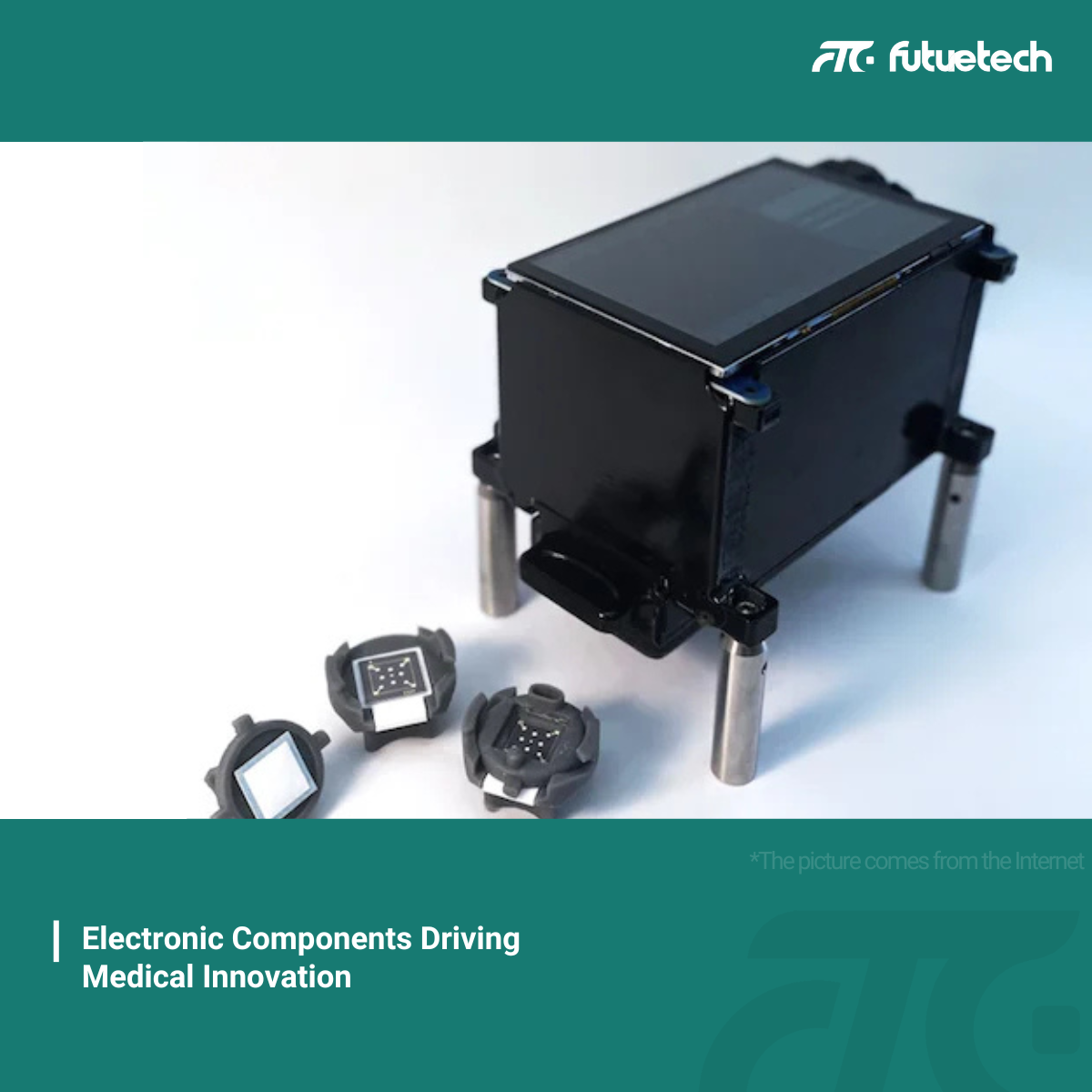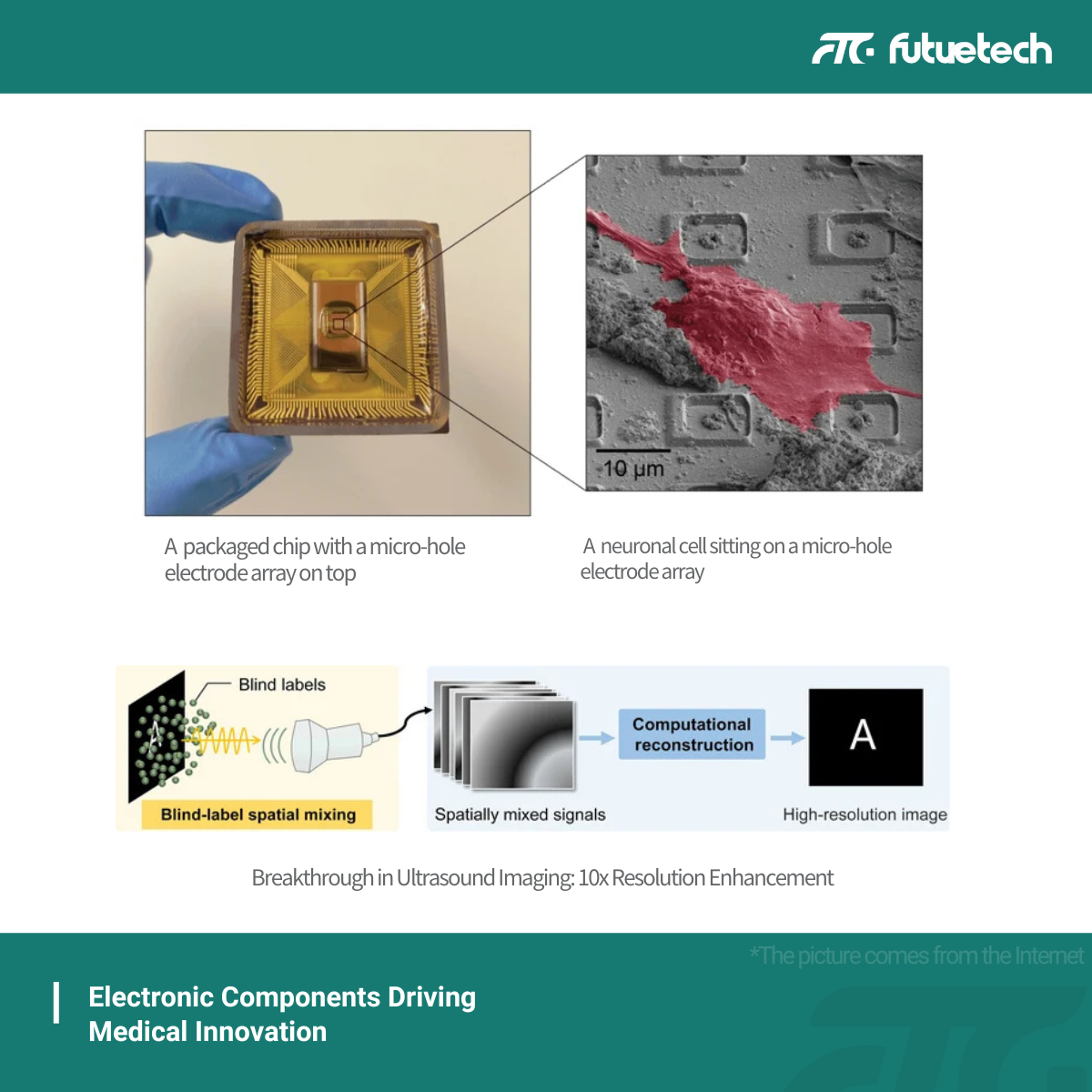As medical technology advances, high-performance electronic components are playing a pivotal role in smart diagnostics, neuroscience, and imaging. Cutting-edge sensors, AI-powered chips, and high-precision imaging systems are driving medical devices toward greater intelligence, portability, and efficiency, providing superior healthcare solutions worldwide. Here are three recent breakthroughs in medical electronics that are reshaping the industry.
1. AI-Powered Portable Sensor for Cardiac Diagnostics
A research team at UCLA has developed an AI-enhanced portable sensor for detecting cardiac troponin I (cTnI)—a critical biomarker for heart attacks. Current high-sensitivity cTnI tests require expensive laboratory equipment, making them inaccessible in many healthcare settings. This new device, a chemiluminescence vertical flow assay (CL-VFA), offers lab-grade accuracy at a lower cost and delivers test results in just 25 minutes.
The system integrates a paper-based sensor, a compact optical reader, and deep learning algorithms that detect cTnI concentrations as low as 0.1 pg/mL. Its affordability and portability make it ideal for emergency care, mobile clinics, and pharmacies, providing a faster and more accessible screening tool for cardiac patients.
Clinical trials have shown that the device’s performance is highly correlated with FDA-approved laboratory analyzers, confirming its reliability and accuracy. Future developments include:
● Expanding biomarker detection to enable broader cardiovascular risk assessment.
● Integrating smartphone-based analysis for remote diagnostics.
● Pursuing regulatory approval to accelerate market adoption.
By combining high-performance biosensors with AI-driven computing, this technology is set to become a game-changing tool for rapid cardiovascular diagnostics, improving patient survival rates worldwide.
2. Advanced Silicon Chip for Neural Synapse Mapping
In the field of neuroscience and brain-machine interfaces, Harvard researchers have developed a high-density silicon-based neural chip that can map synaptic connections in neuronal networks at an unprecedented scale. Traditional techniques such as electron microscopy (which provides structural data) and patch-clamp electrophysiology (which captures functional activity but at a limited scale) lack the ability to fully reconstruct brain networks. This new chip fills the gap by enabling high-resolution functional connectivity mapping.
Capable of simultaneously recording from 3,600 neurons and tracking around 70,000 synaptic events per experiment, the chip provides an in-depth, real-time view of neural circuits. Built on a CMOS platform, it features 4,096 micro-hole electrodes, each functioning like a microscopic patch-clamp pipette. Through precise electrical current control, the chip achieves intracellular access to neurons without causing damage.
With the help of machine learning algorithms, the system can:
● Analyze synaptic strength and connectivity patterns to reconstruct neural network dynamics.
● Investigate the pathology of neurological disorders such as epilepsy, Alzheimer’s, and Parkinson’s disease.
● Optimize neural interface technologies for brain-computer interactions and drug discovery.
Future advancements include:
● Scaling to 10,000+ electrodes for full cortical mapping.
● Integrating optical imaging for multimodal neural analysis.
● Adapting the chip for in-vivo applications, paving the way for brain-machine interfaces and neuroprosthetics.
This innovative chip represents a major step forward in medical electronics, neuroscience, and AI computing, opening up new possibilities for treating neurological disorders and developing next-generation brain interfaces.
3. Breakthrough in Ultrasound Imaging: 10x Resolution Enhancement
Traditional ultrasound imaging has long been constrained by the diffraction limit, which prevents it from resolving structures smaller than half the wavelength of the acoustic waves it uses. This limitation affects the detection of early-stage vascular calcifications, microthrombi, and fine tissue structures. Researchers at the University of Wisconsin-Madison have now developed a far-field ultrasound imaging technique that breaks through this limit, improving resolution by a factor of 10.
Unlike ultrasound localization microscopy (ULM), which relies on contrast agents that are difficult to use in dynamic environments such as blood vessels, this new technique combines hardware and computational reconstruction:
● A Verasonics L11-5V probe transmits ultrasound waves.
● Randomly dispersed glass microspheres scatter the signals, encoding sub-wavelength details.
● A compressive sensing algorithm reconstructs the high-resolution image, revealing previously undetectable microscopic structures.
With 10x improved resolution, this technology enhances diagnostic accuracy in:
● Cardiology, for detecting microvascular disease and early-stage blockages.
● Oncology, for identifying small tumors earlier.
● Neurology, for mapping intricate brain structures with greater precision.
By integrating advanced ultrasound sensors, signal processing electronics, and AI-driven algorithms, this innovation represents a major leap forward in medical imaging, with applications spanning diagnostics, surgical guidance, and health monitoring.
Conclusion: Electronic Components Driving Medical Advancements
From AI-powered cardiac diagnostics to high-density neural mapping and ultra-high-resolution imaging, these breakthroughs highlight the transformative role of advanced electronic components in the medical industry. High-performance sensors, AI-driven computing chips, and CMOS imaging technologies are driving medical devices toward greater precision, intelligence, and accessibility.
As medical electronics continue to evolve, we are entering an era of more efficient and personalized healthcare. Future innovations in biosensors, neural interfaces, and imaging chips will further accelerate progress in precision diagnostics, intelligent monitoring, and customized treatments, ultimately enhancing global healthcare standards and patient outcomes.
 RFQs/הזמנה (0)
RFQs/הזמנה (0)
 RFQs/הזמנה (0)
RFQs/הזמנה (0)


